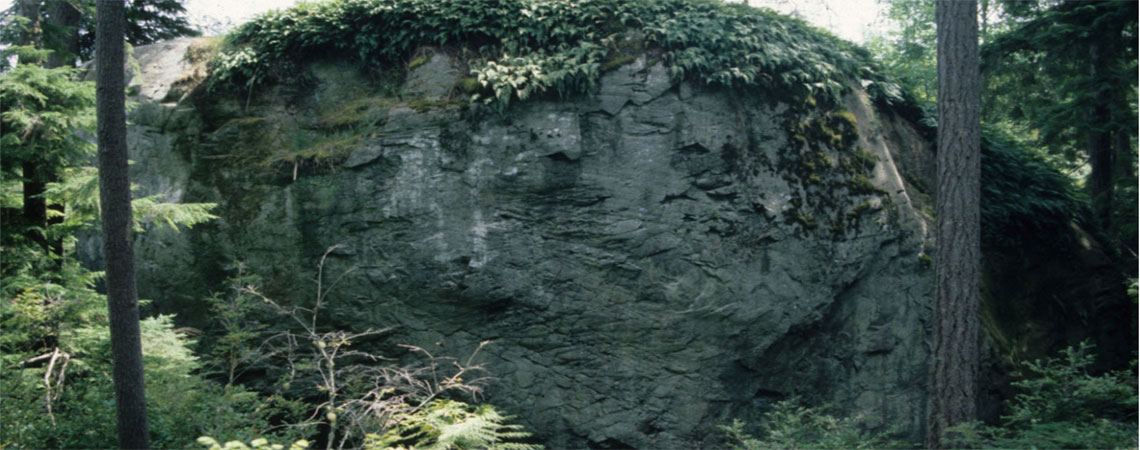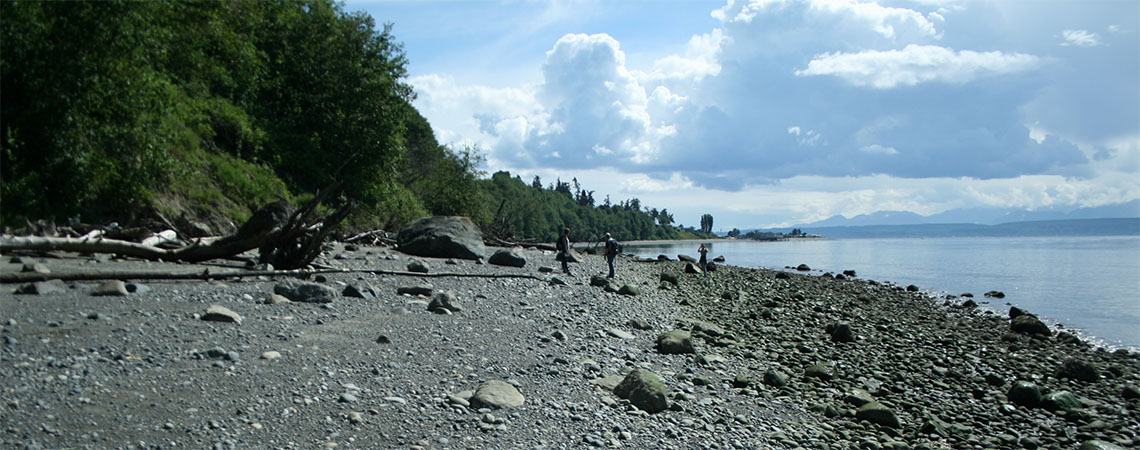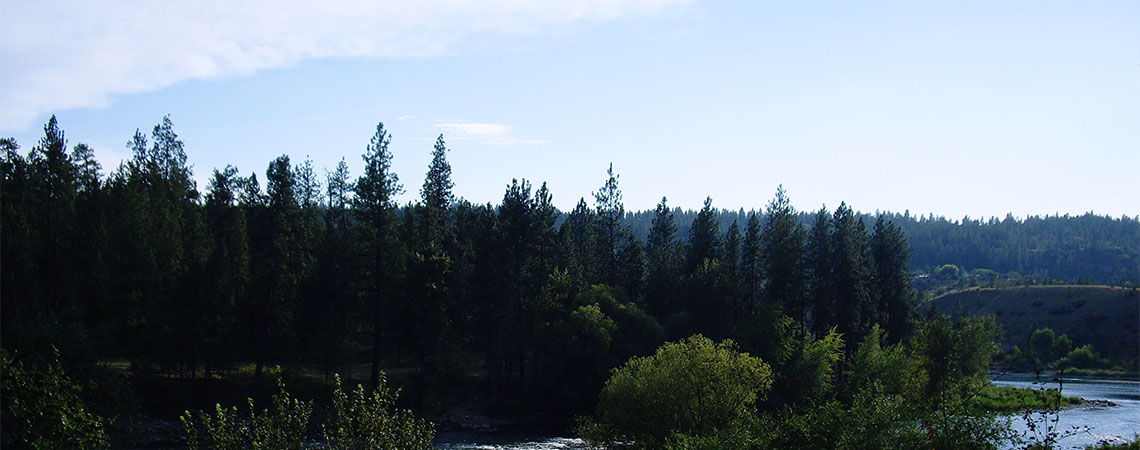
More Science
How are glacial erratics formed?
Erratics may be incorporated into glacial ice by two main processes: (1) large blocks of bedrock, that are susceptible to freeze-thaw weathering, may fall onto a glacier’s surface from bedrock exposures, such as nunataks, cirque headwalls or artetes, or (2) glacial quarrying of the underlying bedrock as the ice flows over a topographic feature that causes pressure changes at the base of the glacier.
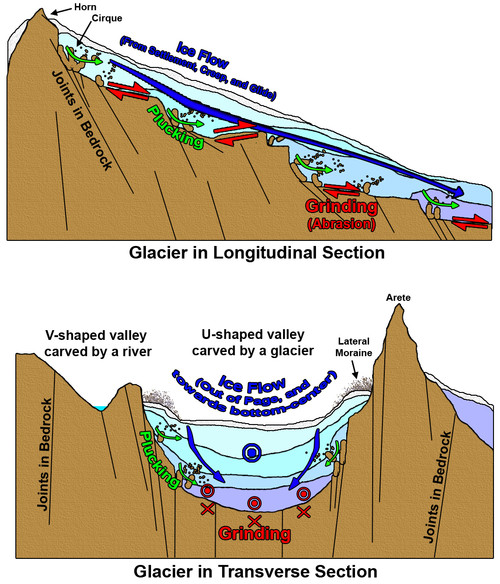
Source: (Glacial Erosion, Diagram)
The pieces of bedrock are subsequently transported by the glacier and deposited in till or directly over bedrock during the glacier’s retreat.
In some geomorphic settings, erratics may be transported by catastrophic outburst floods that result from the breaching of ice-dams that may impound significant volumes of meltwater. During the Last Glaciation a lobe of the CIS advanced south into northwestern Montana and dammed the Clark Fork River, creating Glacial Lake Missoula, which was larger than the Great Lakes Erie and Ontario combined. This ice dam failed multiple times over the last glacial cycle bringing a cascade of floodwaters across eastern Washington on its 430 mile journey to the Pacific Ocean (Fig. 5). The floodwaters not only eroded large canyons forming the modern coulees of eastern Washington, but also transported large blocks of bedrock, that were either incorporated in the original ice dam, or ripped up from the underlying basalt bedrock (Fig. 6).
Figure 5:
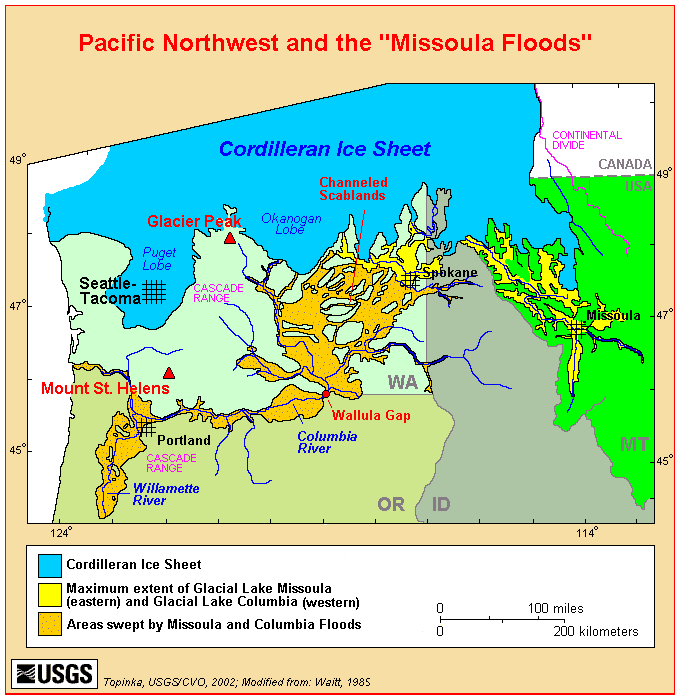
Source: (Pacific Northwest and the Missoula Floods, Map)
Figure 6:

Source: (Foster, Grand Coulee, Image)
Erratics can provide important information regarding source (provenance) of glacier, if the lithology can be traced to its place of origin. Erratic lithologies that are eroded from less extensive bedrock exposures will provide greater specificity to the source location and ice flow characteristics, such flow direction. In some instances, erratic boulders may have been deposited at the base of the glacier and their long axis will be aligned with ice flow direction. These erratics will be easy to identify in the field as they are usually partially embedded within the underlying till. Some erratics are deposited on surface as ablation (melt out) till as the ice retreats from a region. These erratics will tend not be deeply embedded in the underlying till and will not necessarily be oriented parallel to ice-flow direction.
< Page 1 – Page 2>
